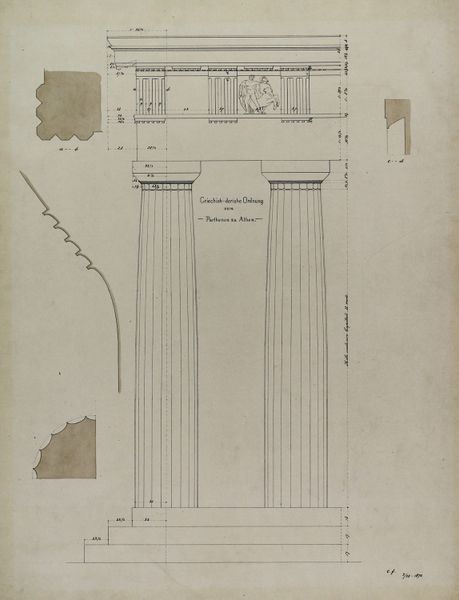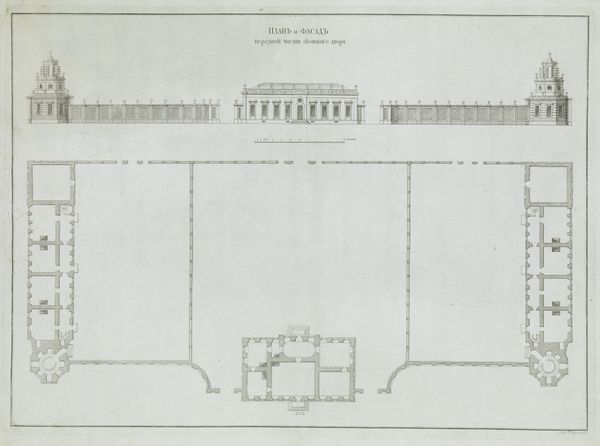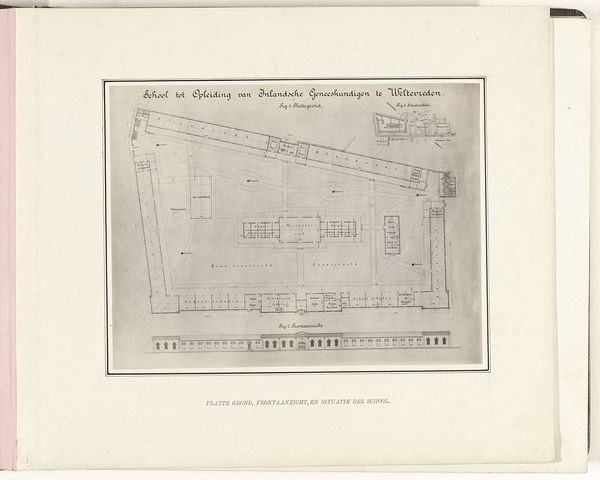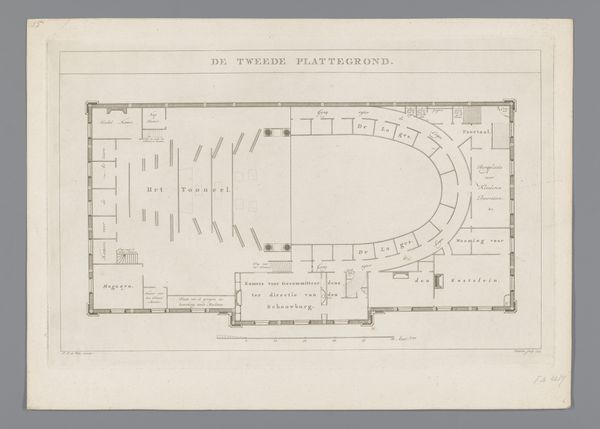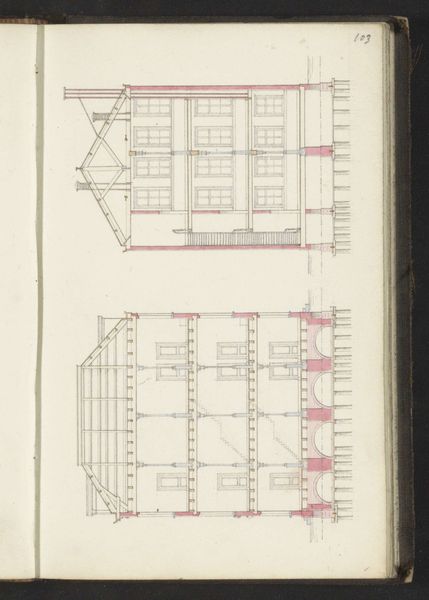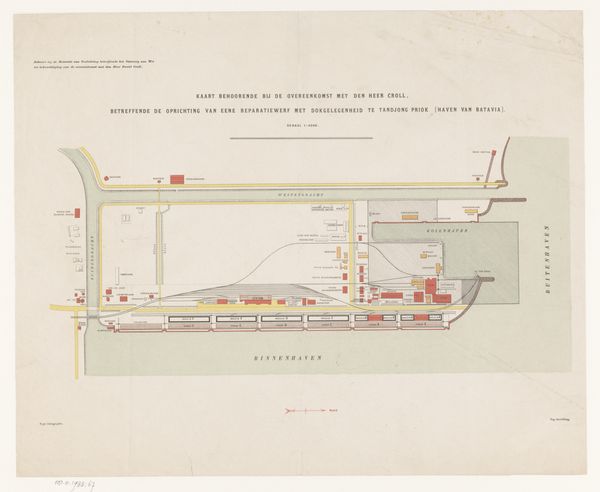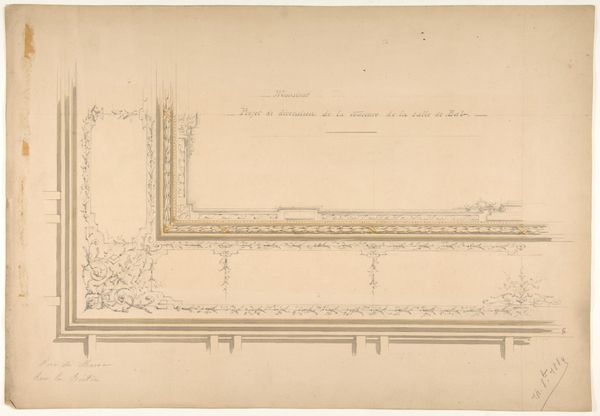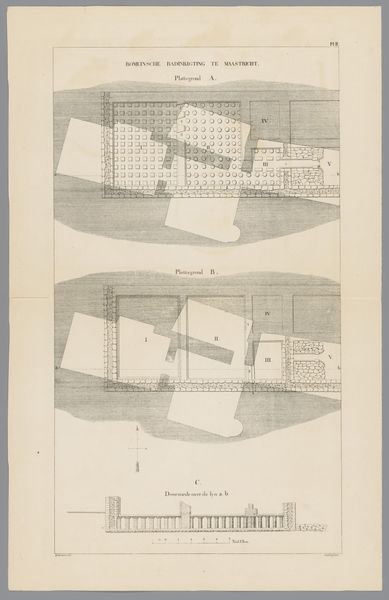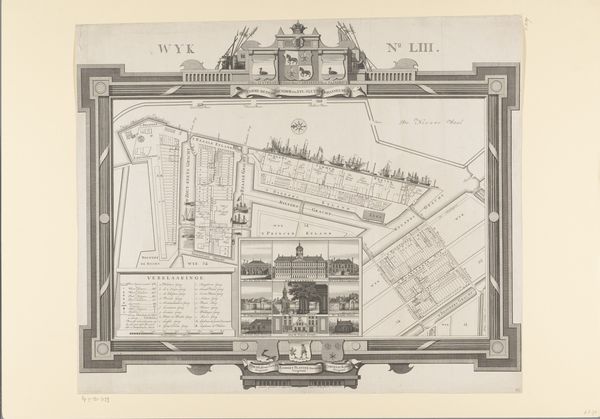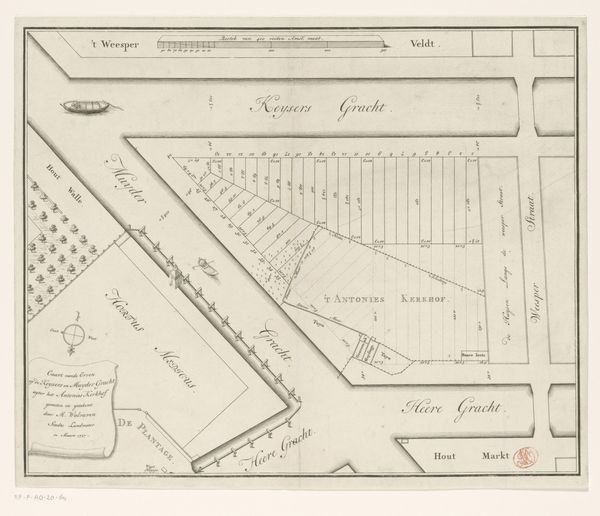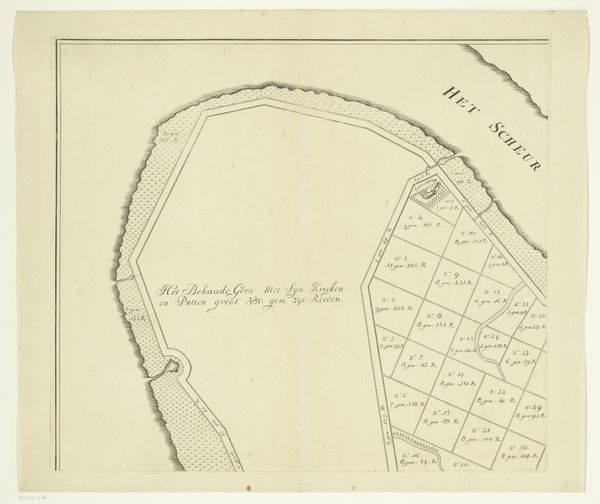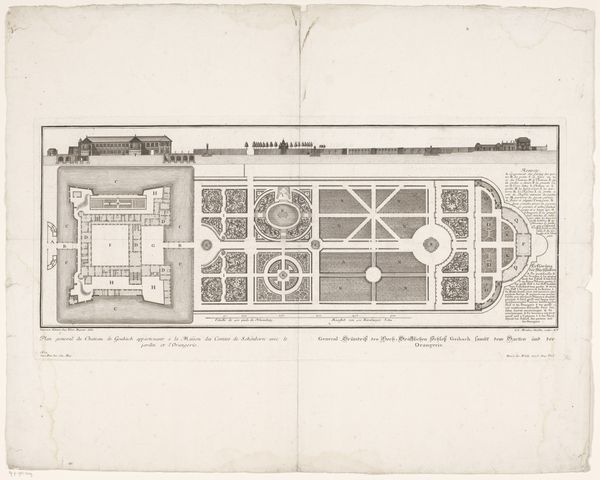
drawing, print, paper, architecture
#
drawing
# print
#
architectural plan
#
landscape
#
paper
#
archive photography
#
geometric
#
architectural section drawing
#
architectural drawing
#
plan drawing
#
architecture
Dimensions: height 545 mm, width 728 mm
Copyright: Rijks Museum: Open Domain
Curator: This lithograph, "Kaart IX. Het Stoomgemaal te Gouda," which translates to "Map IX. The Steam Pumping Station at Gouda," dates from between 1860 and 1861. It's currently held at the Rijksmuseum. Editor: It strikes me immediately as a rather cool and detached presentation. The pale paper, the precise lines, and the multiple views... it feels more like a technical manual than a work of art intended to evoke emotion. Curator: And yet, these drawings do evoke a certain kind of sentiment, if we read beyond their immediate purpose. Here, the blueprint becomes an assertion of human ambition over nature's challenges. This particular steam pumping station was crucial infrastructure, part of the Netherlands' ongoing battle against flooding. These weren't just utilitarian constructions. They became symbolic. Editor: I can see your point. Looking closely, there’s a stark beauty to the clean lines of the buildings. The repeated verticals and horizontals—the chimneys, windows, the lines denoting ground level—they create a sort of minimalist grid. There’s even an echo of classical architecture, in a very subdued form, if you focus on the horizontal format and rhythmic, linear organization. Curator: Absolutely! The architectural drawings present both a plan and an elevation view of the station, creating a very accessible image for audiences in the area to know how exactly they are being protected, which, back in those times, probably brought comfort and assurance. There's power embedded in infrastructure. In this instance, a steam pump facility provides a sense of collective identity that literally elevates. Editor: That interplay between functionality and symbolic meaning is fascinating. I confess, at first glance, I overlooked those subtle cues. The seemingly detached approach almost camouflaged its underlying message. The symmetry, too, gives it a strange iconic quality. Curator: It’s a testament to how visual representations—even ones that appear strictly utilitarian—can carry a depth of meaning and embody cultural priorities. It prompts one to reflect on the hidden ideologies woven into what we take for granted as simple infrastructure. Editor: Well, I've gained a fresh appreciation for what seemed, at first, like a purely technical piece. Its careful structure, combined with its cultural and technological implications, makes it an exceptionally resonant and revealing artifact.
Comments
No comments
Be the first to comment and join the conversation on the ultimate creative platform.
